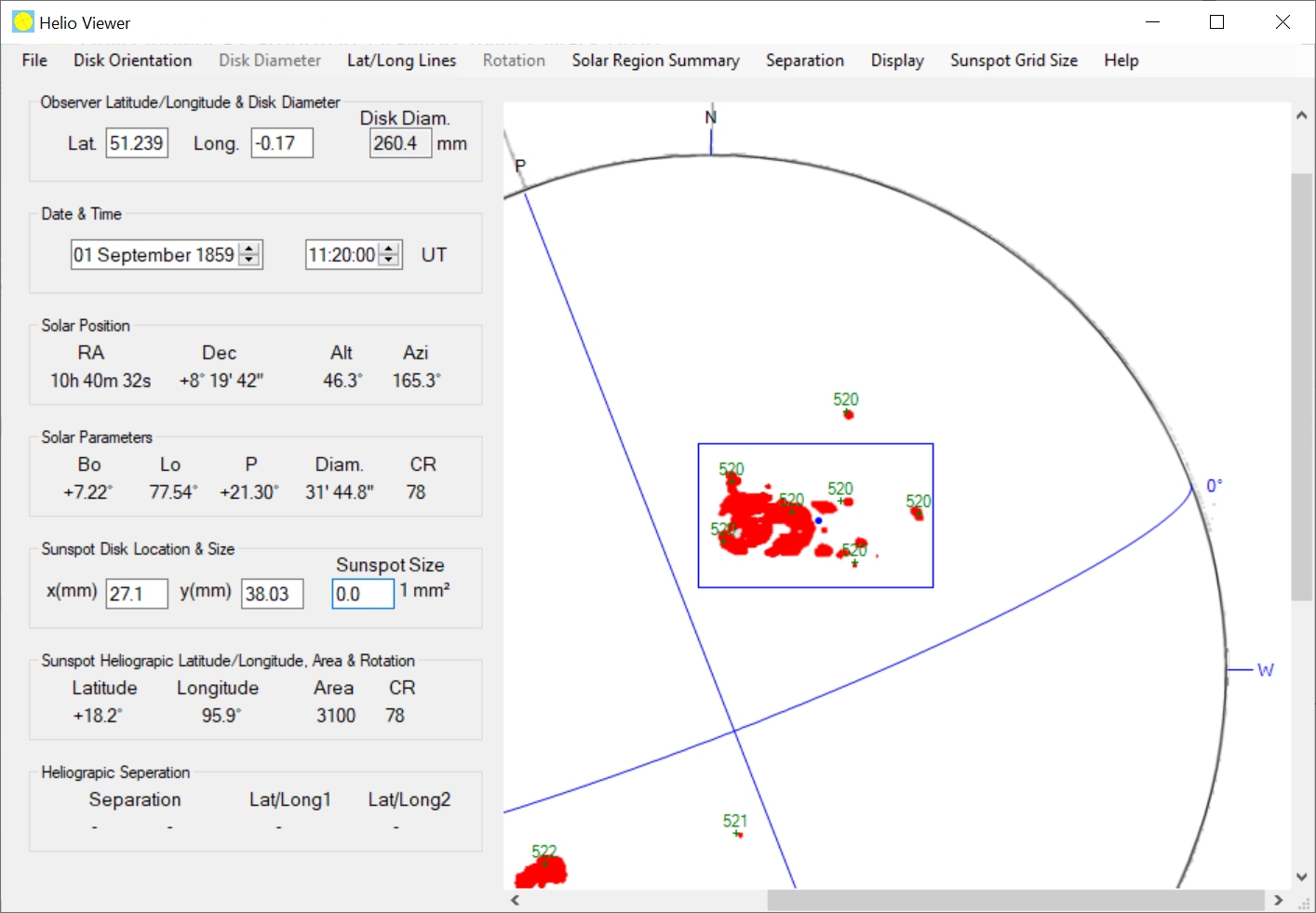The size of the Carrington Event sunspot group
2024 June 9
The size of the sunspot group that produced the white-light solar flare observed by Carrington and Hodgson in 1859 is measured and compared with the size of sunspot groups since 1874.
On 1859 Sept 1, Richard Carrington and Richard Hodgson independently observed one of the first white light solar flares.1,2 The recording of this flare and the subsequent magnetic disturbances and aurorae are well-known and documented, for example, see King (2009) and Hayakawa et al. (2019).3,4 But how large was the sunspot group that produced this flare and how does its size compare with other recorded sunspot groups?

Figure 1 shows Carrington’s drawing for the day of the white light flare (from Hayakawa et al., 2019) after being modified (background removal and conversion to a mask, coloured red) and input into the author’s Helio Viewer software.5 Various heliographic parameters are shown in the left panel for the time of Carrington’s drawing. Superimposed are Carrington’s latitude and longitude of various individual sunspots for his group number 520 (blue crosses).6 Note that Carrington’s longitude values have been corrected by −7.99°.7,8 Helio Viewer calculates the area of each red mask pixel, corrected for foreshortening, within a user specified rectangle.9
The area within the blue box is calculated to be 3100 millionths of the Sun’s visible hemisphere (MSH). Although the small sunspot above the box was included as part of the main group by Carrington, it would nowadays be marked as a separate group, being more than 5° in latitude from the sunspots within the box (the mean heliographic position of the main group is at 18°N/96° while the sunspot above the box is at 28°N/107°).
Members can view the full illustrated article in PDF format by returning to the previous page. Not a member? Why not join today?
| The British Astronomical Association supports amateur astronomers around the UK and the rest of the world. Find out more about the BAA or join us. |
